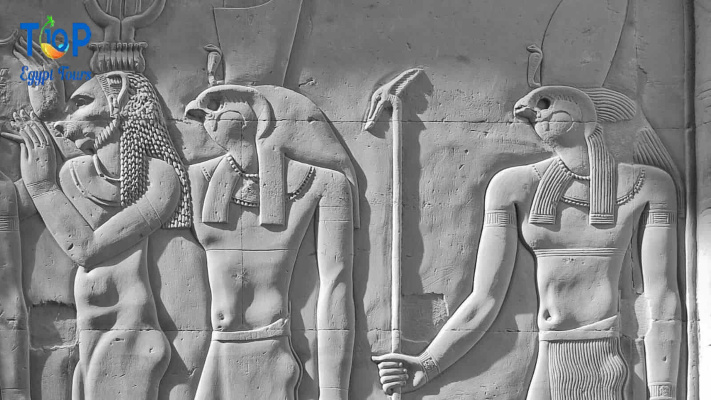Geb God of the Earth, Welcome to Top Ten Egypt Tours‘ blog, where we invite you to embark on an enchanting journey through the captivating realm of ancient Egyptian mythology. In this installment, we delve into the rich tales and legends surrounding Geb, the esteemed god of the earth. Join us as we uncover the significance and symbolism associated with this revered deity and explore the profound impact he had on the ancient Egyptians’ perception of the world.
Geb God of the Earth:
In the vast pantheon of ancient Egyptian gods and goddesses, Geb stood out as the personification of the earth itself, representing the fertile land upon which the civilization thrived. Depicted as a man laying on the ground, often colored green or brown, Geb was an integral part of the Heliopolitan Ennead, a group of nine deities worshipped primarily in Heliopolis.
The Divine Family:
Geb’s lineage was deeply intertwined with the gods and goddesses of ancient Egypt. He was the son of the sky goddess, Nut, and the air god, Shu, and the brother and husband of the sky goddess. Together, Geb and Nut were a symbol of the eternal circle of life, with Nut perpetually stretching herself over her lover Geb’s body, creating a metaphorical embrace between heaven and earth.
Symbolism and Influence:
As the god of the earth, Geb held great power over its fertility and prosperity. The ancient Egyptians believed that it was through his divine influence and blessings that the crops would flourish, ensuring an abundant harvest and sustenance for the civilization. Farmers sought Geb’s favor through various rituals and offerings, acknowledging his benevolence as the provider of life-giving sustenance.
Additionally, Geb’s connection to the earth made him an integral part of the Egyptian concept of the afterlife. It was believed that upon death, the deceased would journey through the realm of Geb to unite with Osiris, the god of the underworld, ultimately attaining eternal life. This association with the afterlife further solidified Geb’s significance within the ancient Egyptian belief system.
Depictions and Iconography:
In art and iconography, Geb is often depicted lying on the ground, sometimes with plants or flowers sprouting from his body. This imagery reinforces his association with fertility and agricultural abundance. The color green, symbolizing plant life and abundance, is commonly used in representations of Geb.
Visiting Ancient Egyptian Sites:
To truly connect with the rich mythology and cultural heritage of ancient Egypt, a visit to the country’s remarkable historical sites is a must. Exploring magnificent temples, such as the Karnak Temple Complex in Luxor or the Temple of Horus in Edfu, can offer an immersive experience, allowing you to feel the presence of gods like Geb and gain a deeper understanding of the ancient Egyptians’ spiritual beliefs.
Geb, the god of the earth, played a vital role in ancient Egyptian mythology and culture. Symbolizing fertility, prosperity, and the cycle of life, Geb’s influence permeated every aspect of society. By exploring the gods and goddesses of ancient Egypt, visitors to this remarkable country can gain a profound appreciation for the profound spiritual beliefs that shaped one of the world’s oldest civilizations.
So, join us at Top Ten Egypt Tours as we continue to unravel the wonders of ancient Egyptian mythology, making your journey through this captivating realm an unforgettable one.



Comment (0)